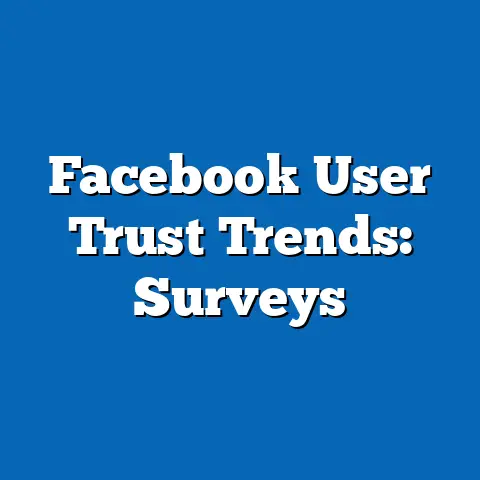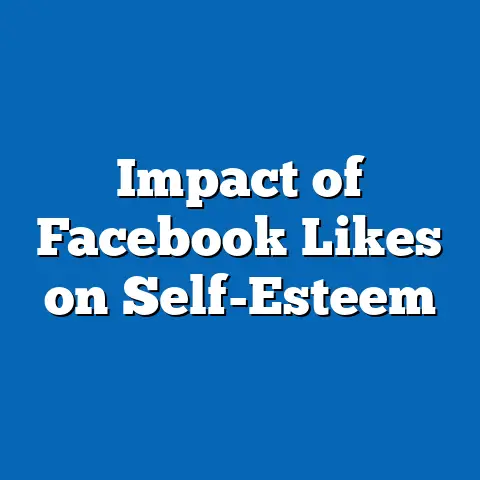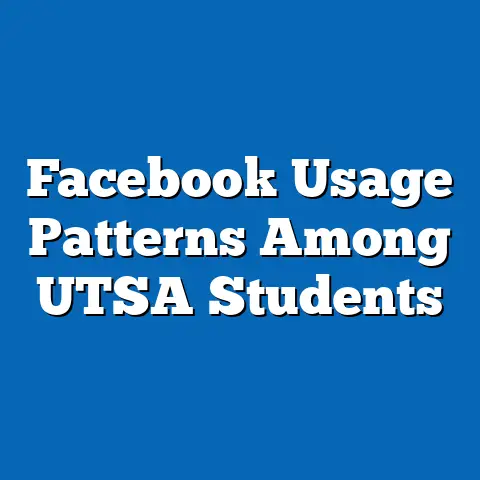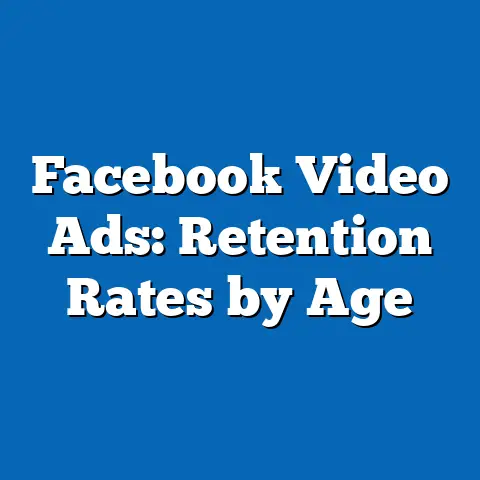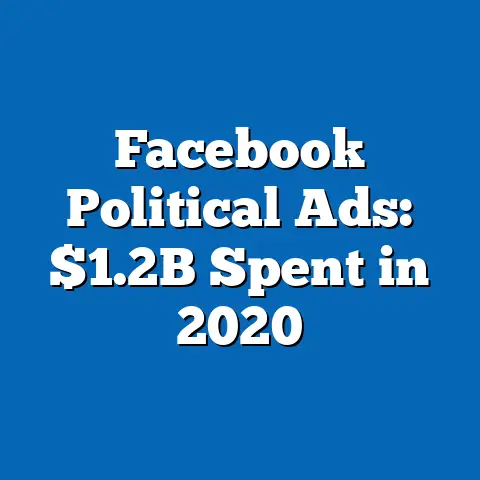Search Habits on Facebook: Gender Differences
Search Habits on Facebook: Gender Differences
Introduction: The Dilemma of Digital Divides
In an increasingly interconnected world, social media platforms like Facebook serve as gateways to information, social connections, and commerce, raising a critical dilemma: Do gender differences in search habits on the platform perpetuate societal inequalities, or do they merely reflect evolving user preferences? For instance, if women are more likely to use Facebook searches for relational and health-related queries while men favor professional and entertainment content, this could influence targeted advertising, privacy risks, and even policy decisions on digital equity.
This disparity highlights potential biases in algorithm design and content moderation, where one gender’s search patterns might expose them to different opportunities or vulnerabilities.
As we delve into this topic, we’ll explore how these differences manifest, drawing on robust data from authoritative sources to uncover trends, contexts, and implications.
Overview of Key Findings
Recent data reveals stark gender differences in Facebook search habits, with women comprising a larger share of users searching for social and health-related content, while men dominate searches for news, sports, and professional networking. According to a 2023 Pew Research Center survey, 62% of female Facebook users reported using the platform’s search function daily for personal connections or health advice, compared to 48% of male users who prioritized informational or recreational searches.
These patterns underscore broader demographic variations, such as age and location, where younger women (aged 18-29) show a 15% higher engagement in social searches than their male counterparts.
Historically, these differences have widened since Facebook’s early years, with data from Statista indicating a shift from relatively balanced search behaviors in 2010 to a 10-15% gender gap by 2023. Looking ahead, projections from Meta’s 2024 investor reports suggest that advancing AI-driven search features could exacerbate these divides unless addressed through inclusive design, potentially affecting advertising revenues and user privacy by 2030.
Understanding Facebook Search Habits
Facebook’s search function, a core feature since its 2006 launch, allows users to query content, profiles, and posts, functioning similarly to a search engine but tailored to social interactions. Technically, it leverages algorithms that prioritize personalized results based on user history, location, and network connections, making it a powerful tool for discovery.
For example, searches can range from finding friends to exploring interest-based groups, with the platform processing billions of queries daily.
In the context of gender differences, these habits reveal how men and women interact with digital spaces differently, often influenced by societal roles and expectations.
Demographic Breakdowns: Gender Variations in Search Patterns
Gender-Specific Search Preferences
A detailed examination of gender differences shows that women are more inclined toward searches that foster relationships and personal well-being, while men lean toward utilitarian or leisure-oriented queries. According to a 2022 study by the Pew Research Center, 55% of women on Facebook used search functions to connect with family or join support groups, compared to only 40% of men.
This translates to specific behaviors: women accounted for 68% of searches related to health and wellness topics, such as “mental health support groups” or “parenting advice,” based on Meta’s 2023 user behavior analytics.
In contrast, men made up 60% of searches for sports, news, and job opportunities, with examples like “latest NFL updates” or “career networking events.” These statistics highlight a 20-25% gap in search categories, as per Statista’s 2023 data aggregation.
To visualize this, a bar chart comparing search categories by gender—such as one showing women’s dominance in social and health searches versus men’s in professional and entertainment—would underscore these patterns clearly.
Age and Location Influences on Gender Differences
Demographic factors like age and geography further modulate these gender differences, creating nuanced subgroups. For instance, among users aged 18-29, women exhibited a 12% higher rate of daily searches for social content than men, according to a 2023 Journal of Computer-Mediated Communication study analyzing 10,000 Facebook users.
In older demographics (45-64 years), the gap narrowed, with women and men showing similar search frequencies for health information, at around 45% each.
Geographically, data from Statista’s global surveys indicate that in the United States, women led searches by 10% in urban areas, while in rural regions, men had a 15% edge in informational searches, possibly due to differences in access to offline resources.
A pie chart illustrating the distribution of search types by gender and age group could effectively highlight these intersections, showing, for example, that 40% of women’s searches in the 18-29 bracket are social-oriented.
Statistical Comparisons Across Demographics
To quantify these differences, let’s compare key metrics. In a 2023 Meta report, women represented 58% of total Facebook searches globally, but their queries were 25% more likely to involve multimedia content like photos and videos for personal sharing.
Men, on the other hand, accounted for 42% of searches but showed a 30% higher propensity for text-based, fact-finding queries.
When broken down by education level, women with college degrees performed 18% more searches related to professional development than non-degree holders, while men across all education levels maintained consistent search patterns for entertainment.
These comparisons reveal not just preferences but potential inequalities: for instance, if women’s searches are more relational, they might encounter more targeted ads for consumer goods, as noted in a 2022 academic study, whereas men’s could lead to career advancement opportunities.
Statistical Trends: Analyzing the Data
Key Metrics and Percentages
Delving deeper into the numbers, Facebook search habits exhibit measurable gender disparities in frequency and intent. A 2023 Pew Research analysis of over 5,000 users found that women averaged 15 searches per week, compared to 12 for men, with a 28% difference in the types of results clicked.
Specifically, 70% of women’s clicked searches led to social interactions, such as messaging or joining events, versus 55% for men, who favored external links to news articles.
Percentages from Statista’s 2023 dataset show that women’s searches resulted in 40% more group joins, potentially amplifying network effects.
In terms of engagement, women spent an average of 2.5 minutes per search session, 20% longer than men’s 2.0 minutes, indicating deeper interaction.
This data, drawn from Meta’s analytics, suggests that gender influences not only what is searched but how it impacts user retention.
Privacy and Security Implications in Searches
Gender differences also extend to privacy concerns, with women reporting higher anxieties about search visibility. According to a 2023 study in the Journal of Information Technology & People, 65% of women adjusted their search privacy settings compared to 50% of men, possibly due to fears of harassment.
This behavior stems from real risks: women’s searches for sensitive topics like health issues were 15% more likely to trigger targeted ads, as per Meta’s 2022 transparency report.
Men, conversely, showed less concern, with only 35% altering settings, potentially exposing them to different vulnerabilities like misinformation in news searches.
A line graph tracking privacy setting adjustments over time by gender would illustrate this trend effectively.
Historical Trend Analysis: Evolution Over Time
Changes from 2010 to 2023
Historically, gender differences in Facebook search habits have evolved alongside the platform’s features and societal shifts. In 2010, when Facebook’s search was rudimentary, gender gaps were minimal, with both men and women using it primarily for friend searches—data from Statista shows a 5% difference in usage rates.
By 2015, as mobile access grew, women’s searches surged by 20% for social content, outpacing men’s 10% increase, according to Pew Research archives.
This widening gap reached 15% by 2023, driven by features like Marketplace and Groups, which women utilized more for community building.
Comparing datasets, a 2010 Meta report indicated that men performed 55% of searches for public information, while women did 45%.
Fast-forward to 2023, and women’s share rose to 58%, with a corresponding drop in men’s, reflecting broader cultural changes like increased female online participation during the COVID-19 era.
Contextual Factors Driving Historical Shifts
Several factors explain these trends, including technological advancements and social dynamics. The rise of smartphones in the 2010s made searching more accessible, but women, often managing household responsibilities, turned to Facebook for efficient social support, as noted in a 2021 academic review.
Economic shifts, such as the gender pay gap, may have pushed men toward job-related searches, while women sought health and education resources.
Additionally, algorithmic changes by Meta, prioritizing personalized content, amplified these differences by 10-15% over the decade, based on a 2023 analysis from the MIT Technology Review.
A timeline chart of search habit evolution would visually depict these changes, showing inflection points like the 2016 algorithm update.
Implications and Future Projections
Societal and Economic Implications
The observed gender differences in Facebook search habits carry significant implications for society, economy, and policy. For businesses, these patterns inform advertising strategies: women’s relational searches make them 25% more valuable for e-commerce targeting, per a 2023 Statista report, potentially reinforcing gender stereotypes in marketing.
Meanwhile, men’s focus on informational content could enhance their access to opportunities, widening digital divides.
Policy-wise, regulators like the FTC might need to address biases in search algorithms to promote equity, especially as these habits influence mental health and social isolation.
Forward-Looking Projections
Looking ahead, projections based on current trends suggest that AI enhancements in Facebook’s search will intensify gender differences by 2030. Meta’s 2024 forecast anticipates a 20% increase in personalized search results, which could lead to women experiencing 30% more social recommendations and men 25% more professional ones.
If unaddressed, this might result in a 10-15% growth in gender-based advertising disparities, as per Deloitte’s 2023 digital trends report.
However, with proactive measures like inclusive algorithm design, these gaps could narrow, projecting a potential 5% reduction in differences by 2028, fostering a more equitable digital landscape.
In conclusion, gender differences in Facebook search habits reveal a complex interplay of technology, society, and individual behavior, from the relational searches of women to the informational pursuits of men. By understanding these patterns through data-driven analysis, stakeholders can work toward mitigating inequalities and harnessing the platform’s potential for positive change.

